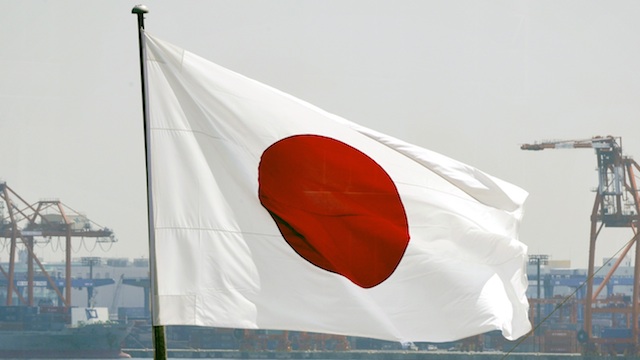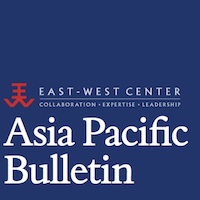SUMMARY
This is AI generated summarization, which may have errors. For context, always refer to the full article.

Japanese Prime Minister Shinzo Abe’s visit to the Yasukuni Shrine on December 26, 2013, has further complicated East Asian regional politics and not only with China and South Korea, but also other states in the region and beyond. The United States expressed that it was “disappointed” and Singapore voiced “regret.”
For these states, the degree of Abe’s political “inconsiderateness” is the major source of concern, rather than the actual visit itself. Tensions are already heightened in the region after China’s unilateral establishment of an Air Defense Identification Zone (ADIZ) in the East China Sea last November and South Korea’s continuous castigation against Japan on the comfort women issue during World War II.
Admittedly, Japan’s relations with the United States and Southeast Asian countries will remain relatively strong. For the United States the political damage is relatively limited, as it acknowledges and welcomes Abe’s efforts to restructure Japanese economic and security policies, including new Japan-US defense guidelines and the Futenma Replacement Facility on the island of Okinawa.
Regarding ASEAN, Japan can continue to build on its successful ASEAN diplomacy initiated throughout 2013. Bilaterally, Abe made a point of being the first Japanese prime minister to visit all ten ASEAN member countries where he outlined a vision for enhanced bilateral political, economic, and security cooperation with each member state.
Multilaterally, Japan has participated in all ASEAN regional meetings, including the ASEAN Defense Ministers Meeting (ADMM) Plus and East Asia Summit (EAS), and these efforts culminated in the ASEAN-Japan commemorative summit in December 2013. In short, Japan’s 2013 diplomacy with the United States and ASEAN states has laid a solid foundation for future cooperation.
This, however, does not allay concerns regarding the potential for instability in Northeast Asia which in turn could have a negative effect on the entire Asia-Pacific region. The United States does not want to see any deterioration in relations between Japan, China and South Korea, as intensification of rivalry might replace constructive cooperation agendas with precarious balance of power politics. Likewise, ASEAN states have no desire to become entangled in great power politics, which could potentially force them to choose sides.
The unfortunate fact is that after Abe’s Yasukuni Shrine visit, it is now even more difficult for Japan to hold bilateral summits with South Korea and China. South Korea’s National Assembly issued a stern resolution condemning Abe’s visit and President Park Geun-hye now faces strong domestic pressure to eschew a bilateral summit with Japan. China’s official statement that Abe “shuts the door on talks with Chinese leaders” also showed its unwillingness to hold a bilateral summit with Japan. These Northeast Asia intraregional political differences only further consolidate US concerns and ASEAN’s fears.
In this context, Japan’s East Asian diplomacy becomes a critical factor in shaping the East Asian strategic landscape for 2014. The challenge is for Japan to realistically improve relations with China and South Korea which in turn will reassure the United States and ASEAN that it will not further increase antagonism with its neighbors. This is a very difficult task as both China and South Korea have now become more skeptical about every Japanese action, particularly pertaining to security policy. Japan’s diplomacy in 2014 requires strategic patience, and there are three diplomatic steps that could help achieve it.
First, Japan needs to proactively conduct a policy of engagement diplomacy towards China and South Korea. It is true that Abe has already and continuously stated that “the door to dialogue is always open” to both neighbors, but the Yasukuni Shrine visit has made it only more unlikely that either China or South Korea will accept such an offer in the immediate future. Under these circumstances, an option for the Abe administration is to reiterate its position on Japanese war-time actions. One step in this direction would be to continuously reaffirm a commitment to the 1995 statement of Japanese Prime Minister Tomiichi Murayama when he solemnly pledged that Japan would “never repeat the errors in our history.” If nothing else this could help signal Japan’s political intention to South Korea and China, while simultaneously reassuring the United States and ASEAN.
Second, Japan should make the most of existing ASEAN multilateral frameworks to engage with China and South Korea. While bilateral political cooperation at the summit level is unlikely to happen in the immediate future, action-based cooperation can be achieved through the ASEAN Regional Forum (ARF) and ADMM Plus. As ASEAN-led forums have been rigidly institutionalized, Japan, China, and South Korea can regularly conduct diplomatic and military cooperation. Particularly, ADMM Plus is a useful framework for this purpose for two reasons. Firstly, as illustrated in the 2013 ADMM Plus Expert Working Groups (EWGs) HADR/Military Medicine Exercise and despite the intensification of regional territorial disputes, China successfully conducted joint military exercises with both the Philippines and Vietnam.
Secondly, given Asian vulnerability to natural disasters and Northeast Asian militaries comparative advantage in responding to such disasters, there is a real need for increased regional HA/DR cooperation. Utilizing ASEAN-led institutions as a diplomatic hub Japan can encourage enhancement of such cooperation, while simultaneously being able to contribute its airlift and surveillance capabilities to enhance Asian response to natural disasters.
Third, Japan should further endeavor to explain development of its national security policy to the international community. Too often international and domestic media reports tend to connect Abe’s conservative agenda with Japan’s security policies. As a result this creates skepticism about Japan’s overall policy development. Abe’s visit to Yasukuni Shrine will only strengthen this skepticism, specifically pertaining to Japanese security policy.
However, Japan’s current defense posture represents more continuity than change. Recent Japanese security documents – the National Security Strategy (NSS) report, the National Defense Program Guidelines (NDPG), and the Mid-term defense program – are all a continuum of the 2010 NDPG under the Democratic Party of Japan and designed to comprehensively but modestly develop Japan’s military capabilities to deal with “gray zone” contingencies and non-traditional security threats. Therefore, further enhancement of Japan’s transparency is crucial in clarifying its overall security policy. In addition, the bottom-up approach, such as Track-II diplomacy would be another effective way to deepen understanding of the core problems when issues such as Yasukuni Shrine are too controversial at the government level.
Under current political conditions, furthering Japan’s diplomatic efforts with strategic patience is a necessary condition to alleviate uncertainties. Japan’s diplomatic challenge in early 2014 is thus to patiently pursue constructive engagement in East Asia. This will contribute to achieving Japan’s own objective – “proactive contribution to world prosperity and peace” – which also benefits stability in the Asia-Pacific region.
About the Author
Kei Koga is an Assistant Professor of Public Policy and Global Affairs with the School of Humanities and Social Sciences at Nanyang Technological University. He can be contacted via email at kkei@ntu.edu.sg. This piece was first published 14 January 2014.
The views expressed here are solely those of the author and not of any organization with which the author is affiliated.
The Asia Pacific Bulletin (APB) is produced by the East-West Center in Washington DC, designed to capture the essence of dialogue and debate on issues of concern in US-Asia relations. For comments/responses on APB issues or article submissions, please contact washington@eastwestcenter.org.
Add a comment
How does this make you feel?
There are no comments yet. Add your comment to start the conversation.